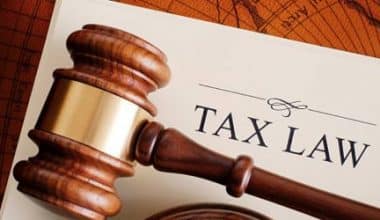Lines of credit are often issued by lenders such as banks or credit unions, and if you qualify, you can draw on it for a certain period of time up to a maximum amount. Only when you borrow from the line of credit will you be charged interest? When you repay borrowed funds, that amount becomes eligible for borrowing again. Read on to learn how lines of credit work even for a business, its types including home equity, unsecured lines of credit for bad credit, and a clear comparison between credit line vs credit limit.
What Is Lines of Credit (LOC)?
A line of credit (LOC) is a predetermined borrowing limit that can be accessed at any time. The borrower may withdraw funds as needed until the limit is met. In the event of an open line of credit, money can be borrowed again as it is repaid.
A LOC is a contract between a financial institution (often a bank) and a customer that specifies the maximum loan amount that the customer may borrow. The borrower can withdraw funds from the LOC at any moment as long as they do not exceed the agreement’s maximum amount (or credit limit).
How do Lines of Credit Work?
First, let’s go over your options when it comes to borrowing money. In general, you can apply for either a loan or a line of credit. A loan provides you with a big sum of money and requires you to pay interest on it immediately, regardless of when you utilize it.
A line of credit, on the other hand, gives you access to a specific amount of money that you can borrow when you need it. However, you do not pay interest until you borrow.
There are business lines of credit, but we’ll focus on personal lines of credit here.
Personal lines of credit are often unsecured, which means you do not need to provide collateral to obtain the line of credit. Secured credit lines are secured by collateral, such as your home or a savings account.
Read Also: BEST HOME EQUITY LINE OF CREDIT: Rates, How it Works, Calculation & Difference
Better credit ratings may help you qualify for a lower annual percentage rate when applying for a line of credit. Some credit lines may have costs, such as an annual charge, as well as borrowing limits.
After you’ve been approved for the line of credit, you’ll have a fixed time frame — known as the “draw period” — during which you can withdraw funds from the account. A draw phase may endure for many years. When you’re ready to borrow money, the bank may issue you special checks or a card, or it may transfer the funds to your checking account.
When you borrow money from your line of credit, interest normally begins to accumulate, and you must begin making at least the minimum payments, the amount of which is added back to your available line of credit as you make them. However, once your draw period is through, you’ll enter the repayment period, during which you’ll have a certain amount of time to pay off any remaining balance. Remember that merely paying minimum payments may cost you more in interest in the long run.
Types of Lines of Credit
LOCs occur in a variety of forms, with each falling into one of two categories: secured or unsecured. Aside from that, each form of LOC has its own set of properties.
#1. Personal Line of Credit
This gives you access to unsecured funds that you can borrow, repay, and borrow again. A personal LOC typically requires a credit history with no defaults, a credit score of 670 or above, and consistent income. Savings and collateral in the form of stocks or certificates of deposit (CDs) are advantageous, while collateral is not necessary for a personal LOC. Personal LOCs are used for emergencies, weddings, and other occasions, overdraft protection, travel, and entertainment, and to help smooth out dips in income.
#2. Home Equity Line of Credit (HELOC)
A home equity line of credit (HELOC) is a loan that is secured by your home’s equity. Your equity is defined as the market worth of your home less the outstanding mortgage balance.
It is uncommon to be able to borrow against all of your home’s equity. Instead, lenders use a formula to determine the maximum amount of a home equity line of credit, known as the combined loan-to-value (CLTV) ratio.
Assume you’ve applied to a lender with a maximum CLTV ratio of 80%. You’ve been there a while, and the neighborhood’s values have risen. You own a $400,000 home and owe $150,000 on the first mortgage. You could be eligible for a loan of up to $170,000 ($400,000 x 0.80 = $320,000; $320,000 – $150,000 = $170,000).
Read Also: TOP BAD CREDIT HOME LOANS: For First-Time Buyers & Veterans with Guaranteed Approval
The lender’s key worry, once again, will be whether the applicant is a worthy risk. The lender is unconcerned about how you spend the money. Your bank will not inquire about what you pay for. However, you should have sound financial reasons for reducing your home equity.
Home renovation projects are a popular usage for home equity lines of credit. Not only will the improvement increase the value (and consequently equity) and livability of your property, but itemizers can deduct some of the interest paid on home equity lines of credit (up to $750,000 in total mortgage debt for married-filing jointly taxpayers).
The previously mentioned applications for unsecured lines of credit are also in play. Because you’re putting your home on the line, you’ll almost certainly get a better interest rate — one that’s comparable to first-mortgage refinancing rates — than with an unsecured line of credit.
#3. Business Lines of Credit
A business lines of credit functions similarly to other types of credit: You can reuse and repay as many times as you want as long as your account is in good standing and you don’t go over your credit limit.
Business lines of credit often have lower limits than term loans, ranging from $1,000 to $250,000. They’re also typically unsecured, which means no security — merchandise or real estate — is required. Personal and business tax returns, bank account information, and business financial records such as profit-and-loss statements and a balance sheet are used by lenders to make lending decisions.
If a company qualifies, a business lines of credit can provide flexibility that a standard term loan cannot.
Secured vs. Unsecured Lines of Credit
Credit lines are classified as either secured or unsecured.
A secured credit line is one in which the borrower uses an asset as collateral to secure the loan, typically a car or a home. If the borrower fails to repay the obligation, the lender may seize the asset. Banks and creditors frequently give cheaper interest rates, bigger spending restrictions, and better terms on secured lines of credit because of the asset.
Unsecured credit lines do not require collateral. A creditor is willing to take the risk that a borrower will repay the debt. Unless you are a well-established business or have an outstanding credit record, it is normally difficult to obtain an unsecured LOC. A long history with a bank or credit union is also advantageous.
#1. Secured Credit Lines
Home equity lines of credit are a common type of secured credit line. Home equity lines of credit use real estate equity as security and are essentially second mortgages tied to credit lines.
Secured credit lines include the following:
- Home equity lines of credit (HELOC): The money can be used for anything, although home renovation projects are a popular choice.
- Vehicle loans: We live in a car culture, and life is difficult without one.
- Pawnshop loans: These are used by those who need money quickly, but there is a risk of losing a valuable possession, especially if you wait too long to return the loan.
- Life insurance loans: You can borrow against entire life insurance policies and use the money for whatever you like.
- Savings-secured loans: These are also useful for unrestrained expenditures.
Pre-paid credit cards have unlimited uses, but getting one with more than $500 on it is tough. However, you can purchase numerous cards.
#2. Unsecured Credit Lines
Credit cards are the most widespread type of unsecured credit line. Personal LOCs frequently have cheaper interest rates than credit cards, and the difference might be significant. Personal LOC lenders can provide benefits that conventional credit cards do not, such as flexible repayment plans.
Unsecured credit lines include the following:
- Credit cards: You can use a credit card for the majority of your daily purchases. You can earn reward points in numerous circumstances.
- Personal lines of credit: These are typically used for projects rather than day-to-day spending, such as a home improvement upgrade.
- Personal loans: Personal loans are also available for projects and larger one-time expenditures, such as household appliances.
- Peer-to-peer loans: These are generally unregulated loans between friends.
- Payday loans: These are for urgent bills that must be paid right away. Because of the high fees and difficulty to return them on time, financial counselors urge clients to look for other ways to borrow money.
If you do not return an unsecured obligation, the lender may employ a debt collector or litigate to recover the debt.
Credit Line vs. Credit Limit
A credit line, also known as a home equity line of credit or a credit card, is a sort of loan that allows you to borrow and repay money on a revolving basis.
A credit limit, on the other hand, is a lending characteristic. A loan’s credit limit is the maximum amount you can borrow or utilize at one time before you have to start repaying. For example, if your credit card has a $10,000 credit limit, the charges you make cannot exceed $10,000.
When you hit that limit, you must begin paying off your credit card amount before you can use it again.
Limitations of Lines of Credit
The key benefit of a LOC is the opportunity to borrow only what is needed while avoiding paying interest on a huge loan. Having said that, borrowers should be aware of potential issues while taking for a LOC:
- Unsecured LOCs feature higher interest rates and credit criteria than collateralized LOCs.
- LOC interest rates are virtually usually variable and vary greatly between lenders.
- LOCs do not offer the same level of regulatory protection as credit cards. Late payments and exceeding the LOC limit might result in harsh penalties.
- Overspending on an open LOC can lead to an inability to make payments.
- Misuse of a LOC can have a negative impact on a borrower’s credit score. Depending on the severity of the situation, the services of a top credit repair company may be worth considering.
What is Line of Credit Example?
Open-end credit, often known as a line of credit, permits the borrower to make repeated withdrawals and payments throughout the draw period and the loan’s life. Credit cards, personal lines of credit, and HELOCs are all instances of open-end credit instruments.
What are the 5 Line of Credit?
The five Cs of credit are significant because lenders use them to decide whether or not to approve you for a financial product. These five Cs—character, capacity, capital, collateral, and conditions—are also used by lenders to determine lending rates and terms.
What is a Line of Credit How Does it Work?
A line of credit is a flexible loan from a financial institution that consists of a set amount of money that you can access whenever you need it. What you borrow via a line of credit can be repaid immediately or over time in regular minimum installments. When money is borrowed, interest is charged on a line of credit.
What are the 3 Different Types of Credit Lines?
Personal, business, and home equity lines of credit (HELOCs) are the most prevalent types of LOCs. Personal LOCs are normally unsecured, however, business LOCs can be either secured or unsecured.
What is the Difference Between a Loan and a Line of Credit?
A loan provides you with a large sum of money that you repay over time. A credit line allows you to borrow money up to a certain amount, pay it back, and borrow it again.
Can I Withdraw Cash from Lines of Credit?
A line of credit is a handy source of financing for your company’s diverse demands. You can take cash from your line of credit as many times as you wish, up to your credit limit.
What are the 4 Types of Credit?
The four most common types of credit are as follows:
- Revolving Credit
- Charge Cards
- Installment Credit
- Non-Installment or Service Credit.
What Does a $500 Credit Line Mean?
So, if your credit limit is $500, you can utilize up to $500 of credit before reaching your limit.
Conclusion
Lines of credit, like any financial product, offer benefits and drawbacks depending on how they are used. On the one hand, over borrowing against a line of credit might lead to financial difficulties. Lines of credit, on the other hand, can be cost-effective ways to pay unexpected or substantial needs.
Shop around and pay close attention to the details, especially the fees, interest rate, and payback timeline, as with any loan.
Related Articles
- LETTER OF CREDIT: How To Write A Good Letter Of Credit In 7 Steps (+ Detailed Guide)
- LINE OF CREDIT: Best UK Practice And What You Should Know
- PRODUCT LINE: Types, Examples, and How It Works
- UNSECURED PERSONAL LOAN: Loan Without Collateral
- BEST UNSECURED BUSINESS LOAN: What Is It, Loan for Small Business, Startups & Bad Credit.





